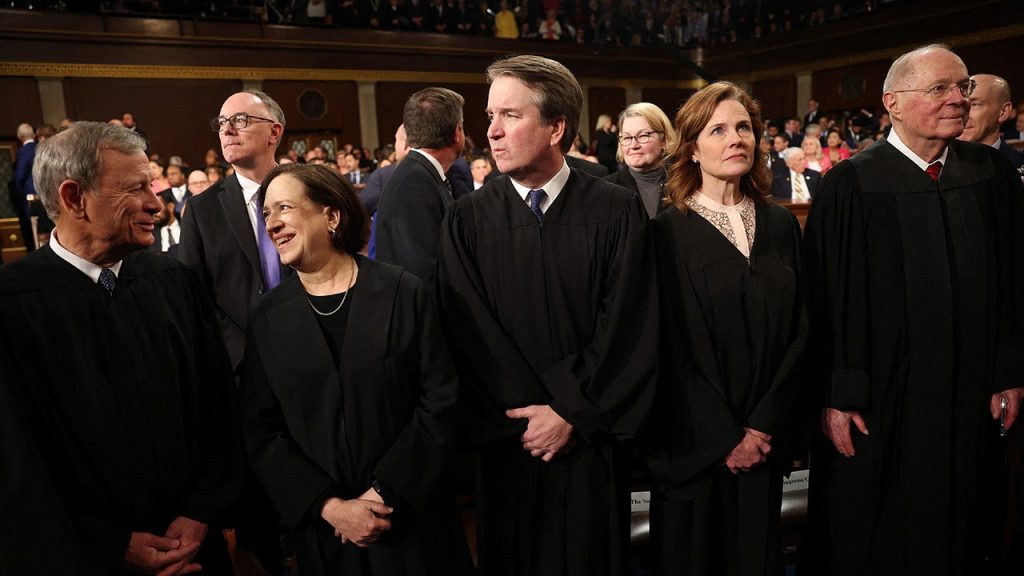In a chilling act reflective of growing tensions around controversial issues, a California man has pleaded guilty to plotting the assassination of U.S. Supreme Court Justice Brett Kavanaugh. Nicholas John Roske, aged 29, from Simi Valley, traveled across the country with a firearm and various other weapons with the intent to target Kavanaugh. The investigation reveals Roske’s motives were tied to anger over recent Supreme Court decisions related to abortion and gun control.
| Article Subheadings |
|---|
| 1) The Intent Behind the Threat |
| 2) The Sequence of Events Leading to the Arrest |
| 3) The Discovery of Weapons and Tools |
| 4) Reactions from Legal Authorities |
| 5) The Future for Roske: Sentencing and Implications |
The Intent Behind the Threat
Nicholas John Roske’s intentions were rooted in his anger over pivotal decisions made by the Supreme Court. In the weeks preceding his planned attack, Roske exhibited distress over a leaked draft that indicated the Court’s potential decision to overturn Roe v. Wade, a landmark case ensuring a woman’s right to choose. Alongside his concerns about reproductive rights, Roske was outraged by a recent school shooting in Uvalde, Texas, where 19 children and two teachers lost their lives. The juxtaposition of these events led Roske to feel that drastic action was necessary to voice his disapproval of the Court’s impending decisions on both abortion and gun control.
The Sequence of Events Leading to the Arrest
Roske’s journey began on June 7, 2022, when he flew from Los Angeles to Washington, D.C., carrying a suitcase with a loaded firearm and ammunition. His destination was the home of Justice Kavanaugh in Montgomery County, Maryland, where he planned to execute his plot. Late that evening, he arrived in the area, prompting him to take a taxi to the judge’s residence around 1 a.m. on June 8. When he was spotted by U.S. Marshals, Roske began walking near Kavanaugh’s home, raising immediate suspicion among the officers tasked with protecting the justice. Shortly thereafter, Roske called emergency services, revealing his dark thoughts and the purpose of his visit, leading to his prompt arrest.
The Discovery of Weapons and Tools
Upon Roske’s arrest, officials conducted a thorough search of his belongings. The discovery included not only the firearm he claimed to possess but a collection of tactical gear and various other items indicative of an intent to harm. Among the contents of his suitcase were a tactical backpack, a tactical knife, ammunition, pepper spray, zip ties, and even lock-picking tools. This assortment reflected a deliberate planning phase and a severe disregard for life and law. The authorities emphasized that such an array of weaponry indicated an extreme intent to carry out violence against a high-profile figure, an act that is taken very seriously within the legal and political frameworks of the nation.
Reactions from Legal Authorities
The legal community and law enforcement officials swiftly condemned Roske’s actions. U.S. Attorney Kelly O. Hayes labeled the incident an “extreme, brazen act,” reinforcing the commitment of all law enforcement agencies to protect judicial officials from acts of violence or intimidation. The gravity of the situation was underscored by Attorney General Pamela Bondi, who assured that any individual contemplating violence against judiciary members would face severe consequences and exemplified the stance that the justice system would not tolerate such threats. This incident serves as a potent reminder of the escalating tensions surrounding judicial decisions in the U.S. and the potential for these matters to incite violent reactions among discontented citizens.
The Future for Roske: Sentencing and Implications
Nicholas Roske is currently expected to receive his sentencing on October 3, where he faces a possible life sentence. Prosecutors have painted a concerning picture of his motivations and the premeditated nature of his actions, noting that Roske utilized encrypted communication to express his plans to target not just Justice Kavanaugh, but also other justices. This behavior indicates a troubling mindset aimed at manipulating the judicial process through violence. Going forward, Roske’s case may serve as a pivotal moment, not only in the fight against political violence but also in discussions surrounding mental health and the societal responsibilities tied to legal rulings.
| No. | Key Points |
|---|---|
| 1 | Nicholas John Roske pleaded guilty to planning an assassination against Justice Brett Kavanaugh. |
| 2 | Roske expressed anger over Supreme Court decisions on abortion and gun control as motivation for his actions. |
| 3 | Authorities found a range of weapons and tactical gear in Roske’s possession, showing serious premeditation. |
| 4 | Legal authorities condemned the attempted assassination and indicated severe legal consequences. |
| 5 | Roske is anticipated to face sentencing that could land him a life sentence in prison. |
Summary
The case involving Nicholas John Roske underscores the alarming intersection of political dissent and violent intent. As tensions surrounding Supreme Court rulings mount, Roske’s actions serve as a stark reminder of the potential consequences of political rage. Legal experts, authorities, and the community at large must reflect on this incident to understand better the implications of extremism and seek preventive measures that address both mental health and civic responsibility.
Frequently Asked Questions
Question: What charges is Nicholas John Roske facing?
Nicholas John Roske is facing charges of attempting to assassinate a U.S. Supreme Court Justice, with a potential sentence of life imprisonment.
Question: What motivated Roske to target Justice Kavanaugh?
Roske was reportedly motivated by recent Supreme Court decisions regarding abortion rights and gun control, which he felt warranted drastic action.
Question: What items were found in Roske’s possession upon arrest?
Authorities discovered a firearm, tactical gear, ammunition, a tactical knife, and various tools suggesting intent to cause harm when they arrested Roske.


